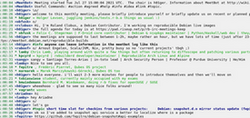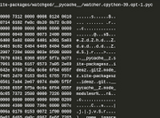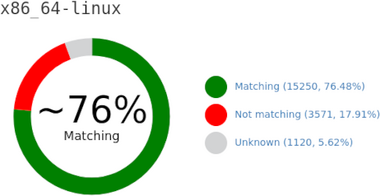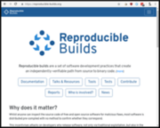Review:
Forward, edited by Blake Crouch
| Publisher: |
Amazon Original Stories |
| Copyright: |
September 2019 |
| ISBN: |
1-5420-9206-X |
| ISBN: |
1-5420-4363-8 |
| ISBN: |
1-5420-9357-0 |
| ISBN: |
1-5420-0434-9 |
| ISBN: |
1-5420-4363-8 |
| ISBN: |
1-5420-4425-1 |
| Format: |
Kindle |
| Pages: |
300 |
This is another Amazon collection of short fiction, this time mostly at
novelette length. (The longer ones might creep into novella.) As before,
each one is available separately for purchase or Amazon Prime "borrowing,"
with separate ISBNs. The sidebar cover is for the first in the sequence.
(At some point I need to update my page templates so that I can add
multiple covers.)
N.K. Jemisin's "Emergency Skin" won the 2020 Hugo Award for Best
Novelette, so I wanted to read and review it, but it would be too short
for a standalone review. I therefore decided to read the whole collection
and review it as an anthology.
This was a mistake. Learn from my mistake.
The overall theme of the collection is technological advance, rapid
change, and the ethical and social question of whether we should slow
technology because of social risk. Some of the stories stick to that
theme more closely than others. Jemisin's story mostly ignores it, which
was probably the right decision.
"Ark" by Veronica Roth: A planet-killing asteroid has been on
its inexorable way towards Earth for decades. Most of the planet has been
evacuated. A small group has stayed behind, cataloging samples and
filling two remaining ships with as much biodiversity as they can find
with the intent to leave at the last minute. Against that backdrop, two
of that team bond over orchids.
If you were going "wait, what?" about the successful evacuation of Earth,
yeah, me too. No hint is offered as to how this was accomplished. Also,
the entirety of humanity abandoned mutual hostility and national borders
to cooperate in the face of the incoming disaster, which is, uh, bizarrely
optimistic for an otherwise gloomy story.
I should be careful about how negative I am about this story because I am
sure it will be someone's favorite. I can even write part of the positive
review: an elegiac look at loss, choices, and the meaning of a life, a
moving look at how people cope with despair. The writing is fine, the
story structure works; it's not a bad story. I just found it monumentally
depressing, and was not engrossed by the emotionally abused protagonist's
unresolved father issues. I can imagine a story around the same facts and
plot that I would have liked much better, but all of these people need
therapy and better coping mechanisms.
I'm also not sure what this had to do with the theme, given that the
incoming asteroid is random chance and has nothing to do with
technological development. (4)
"Summer Frost" by Blake Crouch: The best part of this story is
the introductory sequence before the reader knows what's going on, which
is full of evocative descriptions. I'm about to spoil what is going on,
so if you want to enjoy that untainted by the stupidity of the rest of the
plot, skip the rest of this story review.
We're going to have a glut of stories about the weird and obsessive form
of AI risk invented by the fevered imaginations of the "rationalist"
community, aren't we. I don't know why I didn't predict that. It's going
to be just as annoying as the glut of cyberpunk novels written by people
who don't understand computers.
Crouch lost me as soon as the setup is revealed. Even if I believed that
a game company would use a deep learning AI
still in learning mode
to run an NPC (I don't; see
Microsoft's Tay for an obvious reason why not), or that such an NPC
would spontaneously start testing the boundaries of the game world (this
is not how deep learning works), Crouch asks the reader to believe that
this AI started as a
fully scripted NPC in the prologue with a
fixed storyline. In other words, the foundation of the story is that this
game company used an AI model capable of becoming a general intelligence
for barely more than a cut scene.
This is not how anything works.
The rest of the story is yet another variation on a science fiction plot
so old and threadbare that Isaac Asimov invented the Three Laws of
Robotics to avoid telling more versions of it. Crouch's contribution is
to dress it up in the terminology of the excessively online. (The middle
of the story features a detailed discussion of
Roko's basilisk;
if you recognize that, you know what you're in for.) Asimov would not
have had a lesbian protagonist, so points for progress I guess, but the AI
becomes more interesting to the protagonist than her wife and kid because
of course it does. There are a few twists and turns along the way, but
the destination is the bog-standard hard-takeoff general intelligence
scenario.
One more pet peeve: Authors, stop trying to illustrate the growth of your
AI by having it move from broken to fluent English. English grammar is so
much easier than self-awareness or the Turing test that we had programs
that could critique
your grammar decades before we had believable
chatbots. It's going to get grammar right long before the content of the
words makes any sense. Also, your AI doesn't sound dumber, your AI sounds
like someone whose native language doesn't use pronouns and helper verbs
the way that English does, and your decision to use that as a marker for
intelligence is, uh, maybe something you should think about. (3)
"Emergency Skin" by N.K. Jemisin: The protagonist is a
heavily-augmented cyborg from a colony of Earth's diaspora. The founders
of that colony fled Earth when it became obvious to them that the planet
was dying. They have survived in another star system, but they need a
specific piece of technology from the dead remnants of Earth. The
protagonist has been sent to retrieve it.
The twist is that this story is told in the second-person perspective by
the protagonist's ride-along AI, created from a consensus model of the
rulers of the colony. We never see directly what the protagonist is doing
or thinking, only the AI reaction to it. This is exactly the sort of
gimmick that works much better in short fiction than at novel length.
Jemisin uses it to create tension between the reader and the narrator, and
I thoroughly enjoyed the effect. (As shown in the
Broken Earth trilogy, Jemisin is one of the few
writers who can use second-person effectively.)
I won't spoil the revelation, but it's barbed and biting and vicious and I
loved it. Jemisin does deliver the point with a sledgehammer, so be aware
of that if you want subtlety in your short fiction, but I prefer the
bluntness. (This is part of why I usually don't get along with literary
short stories.) The reader of course can't change the direction of the
story, but the second-person perspective still provides a hit of vicarious
satisfaction. I can see why this won the Hugo; it's worth seeking out.
(8)
"You Have Arrived at Your Destination" by Amor Towles: Sam and
his wife are having a child, and they've decided to provide him with an
early boost in life. Vitek is a fertility lab, but more than that, it can
do some gene tweaking and adjustment to push a child more towards one
personality or another. Sam and his wife have spent hours filling out
profiles, and his wife spent hours weeding possible choices down to three.
Now, Sam has come to Vitek to pick from the remaining options.
Speaking of literary short stories, Towles is the non-SFF writer of this
bunch, and it's immediately obvious. The story requires the SFnal
premise, but after that this is a character piece. Vitek is an elite,
expensive company with a condescending and overly-reductive attitude
towards humanity, which is entirely intentional on the author's part.
This is the sort of story that gets resolved in an unexpected conversation
in a roadside bar, and where most of the conflict happens inside the
protagonist's head.
I was initially going to complain that Towles does the standard literary
thing of leaving off the denouement on the grounds that the reader can
figure it out, but when I did a bit of re-reading for this review, I found
more of the bones than I had noticed the first time. There's enough
subtlety that I had to think for a bit and re-read a passage, but not too
much. It's also the most thoughtful treatment of the theme of the
collection, the only one that I thought truly wrestled with the weird
interactions between technological capability and human foresight. Next
to "Emergency Skin," this was the best story of the collection. (7)
"The Last Conversation" by Paul Tremblay: A man wakes up in a
dark room, in considerable pain, not remembering anything about his life.
His only contact with the world at first is a voice: a woman who is
helping him recover his strength and his memory. The numbers that head
the chapters have significant gaps, representing days left out of the
story, as he pieces together what has happened alongside the reader.
Tremblay is the horror writer of the collection, so predictably this is
the story whose craft I can admire without really liking it. In this
case, the horror comes mostly from the pacing of revelation, created by
the choice of point of view. (This would be a much different story from
the perspective of the woman.) It's well-done, but it has the tendency
I've noticed in other horror stories of being a tightly closed system. I
see where the connection to the theme is, but it's entirely in the
setting, not in the shape of the story.
Not my thing, but I can see why it might be someone else's. (5)
"Randomize" by Andy Weir: Gah, this was so bad.
First, and somewhat expectedly, it's a clunky throwback to a 1950s-style
hard SF puzzle story. The writing is atrocious: wooden, awkward, cliched,
and full of gratuitous infodumping. The characterization is almost
entirely through broad stereotypes; the lone exception is the female
character, who at least adds an interesting twist despite being forced to
act like an idiot because of the plot. It's a very old-school type of
single-twist story, but the ending is completely implausible and falls
apart if you breathe on it too hard.
Weir is something of a throwback to an earlier era of scientific puzzle
stories, though, so maybe one is inclined to give him a break on the
writing quality. (I am not; one of the ways in which science fiction has
improved is that you can get good scientific puzzles
and good
writing these days.) But the science is also so bad that I was literally
facepalming while reading it.
The premise of this story is that quantum computers are commercially
available. That will cause a serious problem for Las Vegas casinos,
because the generator for
keno
numbers is vulnerable to quantum algorithms. The solution proposed by the
IT person for the casino? A quantum random number generator. (The words
"fight quantum with quantum" appear literally in the text if you're
wondering how bad the writing is.)
You could convince me that an ancient keno system is using a pseudorandom
number generator that might be vulnerable to some quantum algorithm and
doesn't get reseeded often enough. Fine. And yes, quantum computers can
be used to generate high-quality sources of random numbers. But this
solution to the problem makes no sense whatsoever. It's like swatting a
house fly with a nuclear weapon.
Weir says explicitly in the story that all the keno system needs is an
external source of high-quality random numbers. The next step is to go to
Amazon and buy a hardware random number generator. If you want to
splurge, it might cost you $250. Problem solved. Yes, hardware random
number generators have various limitations that may cause you problems if
you need millions of bits or you need them very quickly, but not for
something as dead-simple and with such low entropy requirements as keno
numbers! You need a trivial number of bits for each round; even the
slowest and most conservative hardware random number generator would be
fine. Hell, measure the noise levels on the casino floor.
Point a camera at a lava
lamp. Or just buy one of the physical ball machines they use for the
lottery. This problem is
heavily researched, by casinos in
particular, and is not significantly changed by the availability of
quantum computers, at least for applications such as keno where the
generator can be reseeded before each generation.
You could maybe argue that this is an excuse for the IT guy to get his
hands on a quantum computer, which fits the stereotypes, but that still
breaks the story for reasons that would be spoilers. As soon as any other
casino thought about this, they'd laugh in the face of the characters.
I don't want to make too much of this, since anyone can write one bad
story, but this story was dire at every level. I still owe Weir a proper
chance at novel length, but I can't say this added to my enthusiasm. (2)
Rating: 4 out of 10

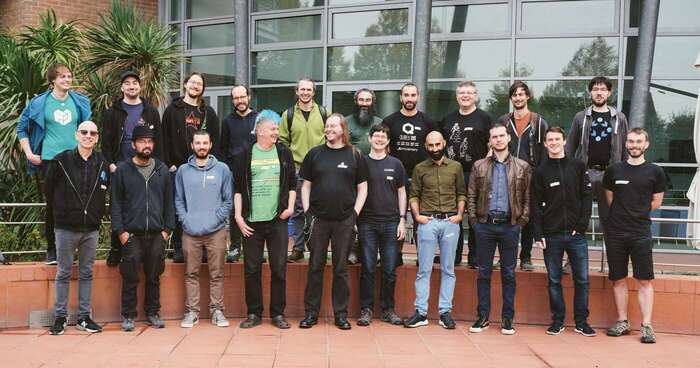

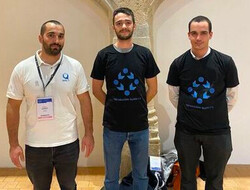
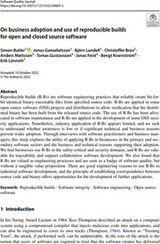
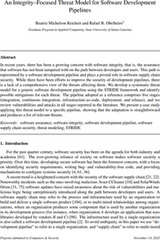







 And all of this is because I can read, write, articulate. Perhaps many of them may not even have a voice or a platform.
Even to get this temporary progressive disability certificate there is more than 4 months of running from one place to the other, 4 months of culmination of work. This I can share and tell from my experience, who knows how much else others might have suffered for the same. In my case a review will happen after 5 years, in most other cases they have given only 1 year. Of course, this does justify people s jobs and perhaps partly it may be due to that. Such are times where I really miss that I am unable to hear otherwise could have fleshed out lot more other people s sufferings.
And just so people know/understand this is happening in the heart of the city whose population easily exceeds 6 million plus and is supposed to be a progressive city. I do appreciate and understand the difficulties that the doctors are placed under.
And all of this is because I can read, write, articulate. Perhaps many of them may not even have a voice or a platform.
Even to get this temporary progressive disability certificate there is more than 4 months of running from one place to the other, 4 months of culmination of work. This I can share and tell from my experience, who knows how much else others might have suffered for the same. In my case a review will happen after 5 years, in most other cases they have given only 1 year. Of course, this does justify people s jobs and perhaps partly it may be due to that. Such are times where I really miss that I am unable to hear otherwise could have fleshed out lot more other people s sufferings.
And just so people know/understand this is happening in the heart of the city whose population easily exceeds 6 million plus and is supposed to be a progressive city. I do appreciate and understand the difficulties that the doctors are placed under.
 I hope you had a nice Halloween!
I've collected together some songs that I've enjoyed over the last couple of
years that loosely fit a theme: ambient, instrumental, experimental, industrial,
dark, disconcerting, etc. I've prepared a Spotify playlist of most of
them, but not all. The list is inline below as well, with many (but not all)
tracks linking to Bandcamp, if I could find them there.
This is a bit late, sorry. If anyone listens to something here and has any
feedback I'd love to hear it.
(If you are reading this on an aggregation site, it's possible the embeds won't
work. If so, click through to my main site)
Spotify playlist:
I hope you had a nice Halloween!
I've collected together some songs that I've enjoyed over the last couple of
years that loosely fit a theme: ambient, instrumental, experimental, industrial,
dark, disconcerting, etc. I've prepared a Spotify playlist of most of
them, but not all. The list is inline below as well, with many (but not all)
tracks linking to Bandcamp, if I could find them there.
This is a bit late, sorry. If anyone listens to something here and has any
feedback I'd love to hear it.
(If you are reading this on an aggregation site, it's possible the embeds won't
work. If so, click through to my main site)
Spotify playlist:  So the last three stories I found the most intriguing.
The first one is titled Man on the Beach. Apparently, a gentleman goes to one of the beaches, a sort of lonely beach, hails a taxi and while returning suddenly dies. The Taxi driver showing good presence of mind takes it to hospital where the gentleman is declared dead on arrival. Unlike in India, he doesn t run away but goes to the cafeteria and waits there for the cops to arrive and take his statement. Now the man is in his early 40s and looks to be fit. Upon searching his pockets he is found to relatively well-off and later it turns out he owns a couple of shops. So then here are the questions ?
What was the man doing on a beach, in summer that beach is somewhat popular but other times not so much, so what was he doing there?
How did he die, was it a simple heart attack or something more? If he had been drugged or something then when and how?
These and more questions can be answered by reading the story Man on the Beach .
2. The death of a photographer Apparently, Kurt lives in a small town where almost all the residents have been served one way or the other by the town photographer. The man was polite and had worked for something like 40 odd years before he is killed/murdered. Apparently, he is murdered late at night. So here come the questions
a. The shop doesn t even stock any cameras and his cash box has cash. Further investigation reveals it is approximate to his average takeout for the day. So if it s not for cash, then what is the motive ?
b. The body was discovered by his cleaning staff who has worked for almost 20 years, 3 days a week. She has her own set of keys to come and clean the office? Did she give the keys to someone, if yes why?
c. Even after investigation, there is no scandal about the man, no other woman or any vices like gambling etc. that could rack up loans. Also, nobody seems to know him and yet take him for granted till he dies. The whole thing appears to be quite strange. Again, the answers lie in the book.
3. The Pyramid Kurt is sleeping one night when the telephone rings. The scene starts with a Piper Cherokee, a single piston aircraft flying low and dropping something somewhere or getting somebody from/on the coast of Sweden. It turns and after a while crashes. Kurt is called to investigate it. Turns out, the plane was supposed to be destroyed. On crash, both the pilot and the passenger are into pieces so only dental records can prove who they are. Same day or a day or two later, two seemingly ordinary somewhat elderly women, spinsters, by all accounts, live above the shop where they sell buttons and all kinds of sewing needs of the town. They seem middle-class. Later the charred bodies of the two sisters are found :(. So here come the questions
a.Did the plane drop something or pick something somebody up ? The Cherokee is a small plane so any plane field or something it could have landed up or if a place was somehow marked then could be dropped or picked up without actually landing.
b. The firefighter suspects arson started at multiple places with the use of petrol? The question is why would somebody wanna do that? The sisters don t seem to be wealthy and practically everybody has bought stuff from them. They weren t popular but weren t also unpopular.
c. Are the two crimes connected or unconnected? If connected, then how?
d. Most important question, why the title Pyramid is given to the story. Why does the author share the name Pyramid. Does he mean the same or the original thing? He could have named it triangle. Again, answers to all the above can be found in the book.
One thing I also became very aware of during reading the book that it is difficult to understand people s behavior and what they do. And this is without even any criminality involved in. Let s say for e.g. I die in some mysterious circumstances, the possibility of the police finding my actions in last days would be limited and this is when I have hearing loss. And this probably is more to do with how our minds are wired. And most people I know are much more privacy conscious/aware than I am.
So the last three stories I found the most intriguing.
The first one is titled Man on the Beach. Apparently, a gentleman goes to one of the beaches, a sort of lonely beach, hails a taxi and while returning suddenly dies. The Taxi driver showing good presence of mind takes it to hospital where the gentleman is declared dead on arrival. Unlike in India, he doesn t run away but goes to the cafeteria and waits there for the cops to arrive and take his statement. Now the man is in his early 40s and looks to be fit. Upon searching his pockets he is found to relatively well-off and later it turns out he owns a couple of shops. So then here are the questions ?
What was the man doing on a beach, in summer that beach is somewhat popular but other times not so much, so what was he doing there?
How did he die, was it a simple heart attack or something more? If he had been drugged or something then when and how?
These and more questions can be answered by reading the story Man on the Beach .
2. The death of a photographer Apparently, Kurt lives in a small town where almost all the residents have been served one way or the other by the town photographer. The man was polite and had worked for something like 40 odd years before he is killed/murdered. Apparently, he is murdered late at night. So here come the questions
a. The shop doesn t even stock any cameras and his cash box has cash. Further investigation reveals it is approximate to his average takeout for the day. So if it s not for cash, then what is the motive ?
b. The body was discovered by his cleaning staff who has worked for almost 20 years, 3 days a week. She has her own set of keys to come and clean the office? Did she give the keys to someone, if yes why?
c. Even after investigation, there is no scandal about the man, no other woman or any vices like gambling etc. that could rack up loans. Also, nobody seems to know him and yet take him for granted till he dies. The whole thing appears to be quite strange. Again, the answers lie in the book.
3. The Pyramid Kurt is sleeping one night when the telephone rings. The scene starts with a Piper Cherokee, a single piston aircraft flying low and dropping something somewhere or getting somebody from/on the coast of Sweden. It turns and after a while crashes. Kurt is called to investigate it. Turns out, the plane was supposed to be destroyed. On crash, both the pilot and the passenger are into pieces so only dental records can prove who they are. Same day or a day or two later, two seemingly ordinary somewhat elderly women, spinsters, by all accounts, live above the shop where they sell buttons and all kinds of sewing needs of the town. They seem middle-class. Later the charred bodies of the two sisters are found :(. So here come the questions
a.Did the plane drop something or pick something somebody up ? The Cherokee is a small plane so any plane field or something it could have landed up or if a place was somehow marked then could be dropped or picked up without actually landing.
b. The firefighter suspects arson started at multiple places with the use of petrol? The question is why would somebody wanna do that? The sisters don t seem to be wealthy and practically everybody has bought stuff from them. They weren t popular but weren t also unpopular.
c. Are the two crimes connected or unconnected? If connected, then how?
d. Most important question, why the title Pyramid is given to the story. Why does the author share the name Pyramid. Does he mean the same or the original thing? He could have named it triangle. Again, answers to all the above can be found in the book.
One thing I also became very aware of during reading the book that it is difficult to understand people s behavior and what they do. And this is without even any criminality involved in. Let s say for e.g. I die in some mysterious circumstances, the possibility of the police finding my actions in last days would be limited and this is when I have hearing loss. And this probably is more to do with how our minds are wired. And most people I know are much more privacy conscious/aware than I am.

















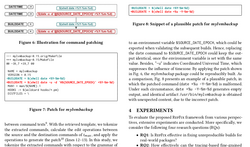

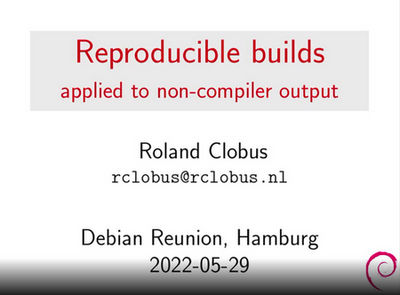




 I received some feedback on the first part of interviews about the
internet with children that I d like to share publicly here. Thank you!
Your thoughts and experiences are important to me!
I received some feedback on the first part of interviews about the
internet with children that I d like to share publicly here. Thank you!
Your thoughts and experiences are important to me!




